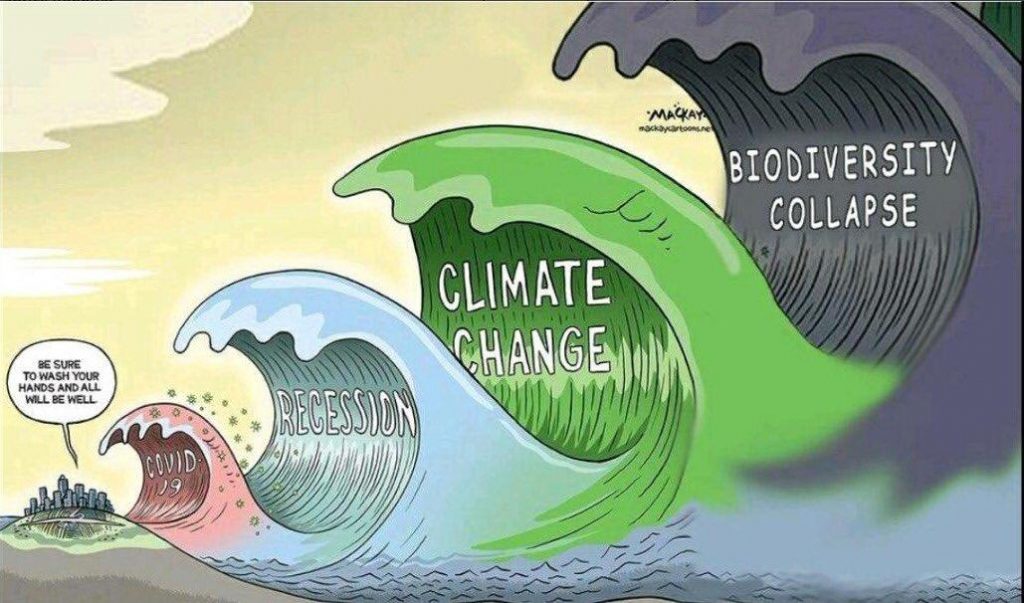“To succeed in the post-pandemic era, leaders need new skills and capabilities, leaders must be proficient across a wide set of paradoxical characteristics.” say Paul Leinwand, Mahadeva Matt Mani, and Blair Sheppard in HBR “6 leadership paradoxes for the post-pandemic era”.
In September I wrote a small article on LinkedIn about the Leadership crisis we are in. But how do we get out of this unseen crisis? It requires drastic change and change is something we all dislike. Leadership by example is crucial, so in March I challenged leaders to be bold and plant the flag with me. I strongly believe this is just the beginning of bigger waves hitting us in the coming year(s), so we better start to up our leadership game!
Become quiet, observe, retreat, reflect and re-create
After my initial short rage, I became quiet and focussed. I started reading and re-reading many different books and reflected daily on leadership in the new world. Theory U, Beyonders, Adaptive Intelligence, Meta Systems, The Sheikh CEO, Employee Engagement, what else? and Breaking the Habit of Being Yourself, are just a few examples. Together with our corporate well-being coach – Jef Geys – I even started working on a better version of myself. A more balanced one with a healthier mind, body, food and social life. Releasing all the negativity of the past.
I coached our team on a daily basis and I followed the opinions of some of my mentors like Jan De Schepper. He wrote the book Connexion with Paul Van Den Bossche about the 7 paradoxes for modern leaders. Jan recently said something on LinkedIn that resonated with me:
“In each crisis, the resilience of people is under pressure. A crisis requires leaders who score high on keeping employees and organizations resilient and flexible. These ‘conneXion leaders’ generate a warm human connection among their employees… They are leaders not only because of ‘what they have accomplished’ but because of ‘who they are’. After a crisis, you notice that it is precisely these leaders who have looked to the future, have listened carefully to the market and have invested in their people. Their company and their offer in the market will prevail. Most executives think too little in the long term. Studies indicate that a minority of leaders “have a memory of what does not yet exist”: Only 30% is predictive: what could happen? Only 3% is prescriptive: what should we do? More than 67% are very good at descriptive: what happened? ‘ConneXion leaders’ understand better what to do during and especially after the crisis. They are leaders with sense-making qualities. They know very well where they want to go, what they want to achieve and also how they are going to get there.“
The future of leadership
The latest article in HBR resonates 100% with how I think about the future of leadership.
“The pandemic has accelerated a trend that has been unfolding over the last decade. As the world has grown more digital and complex, the range of decisions that leaders need to make has broadened, spanning from big picture strategic thinking to careful execution, to advancing technology roadmaps and upskilling and engaging employees. The past year has been particularly intense, pushing leaders to make decisions for which they had no previous experience — and do so quickly.”
“To succeed in this post-pandemic era of value creation, leaders need new skills and capabilities. The characteristics that leaders we interviewed considered most important in this new era align well with the six paradoxes of leadership described in Blair Sheppard’s recent book, Ten Years to Midnight.”
- Strategic Executor
- Humble Hero
- Tech-Savvy Humanist
- Traditioned Innovator
- High-Integrity Politician
- Globally-Minded Localist
Read the full article here and be the change you want to see in this world!
The Herculean Alliance ecosystem of experts, formats and technologies want to help you measure and improve employee engagement. Employee engagement drives customer happiness and thus stakeholder value. Leadership is one of the 12 drivers of employee engagement, as mentioned in the book “Employee engagement, what else?” by Inge Van Belle and Klaus Lommatzsch.
